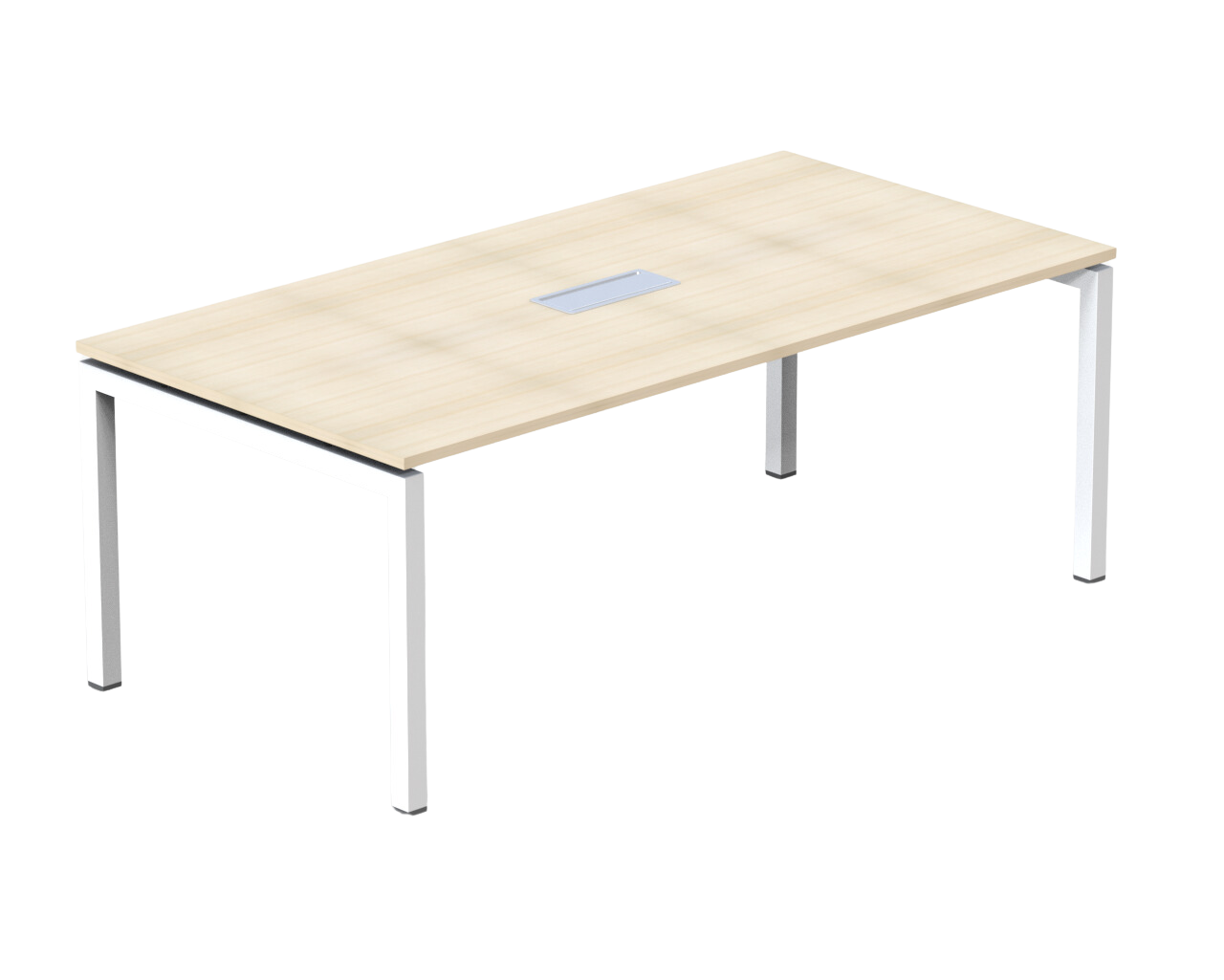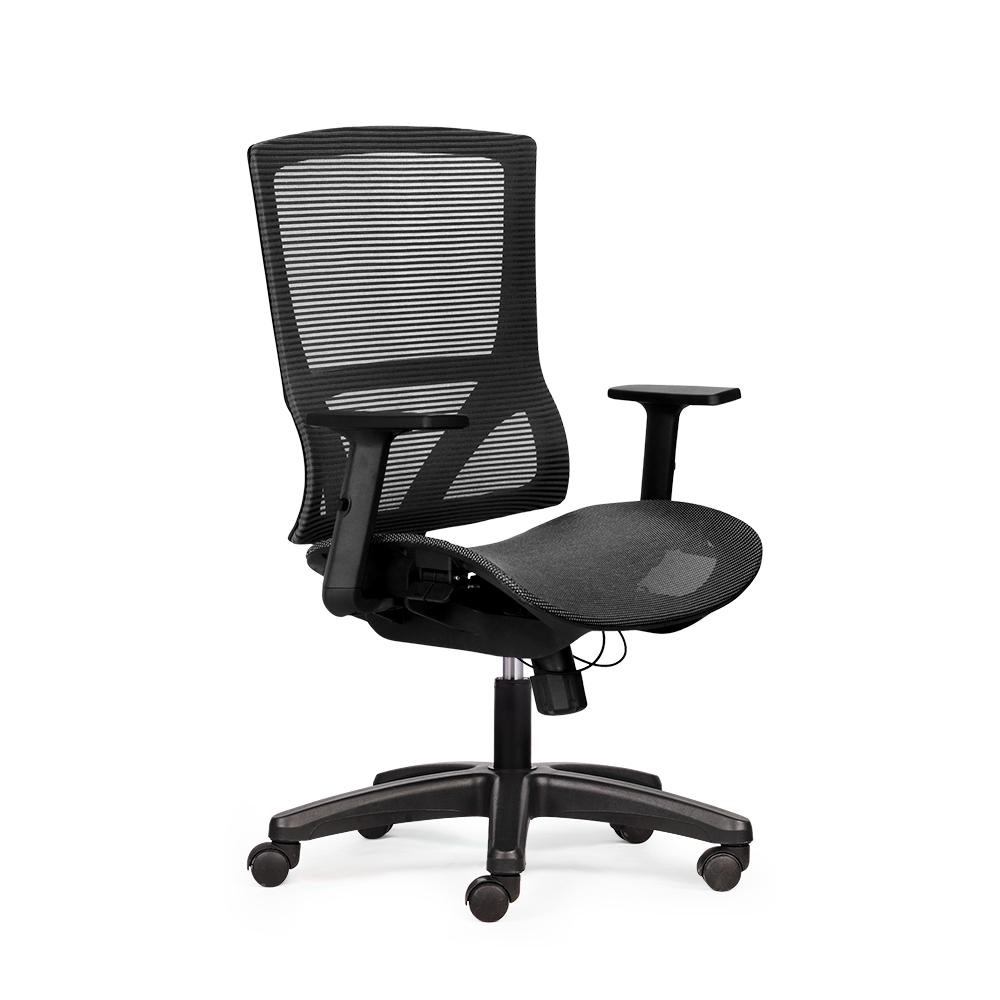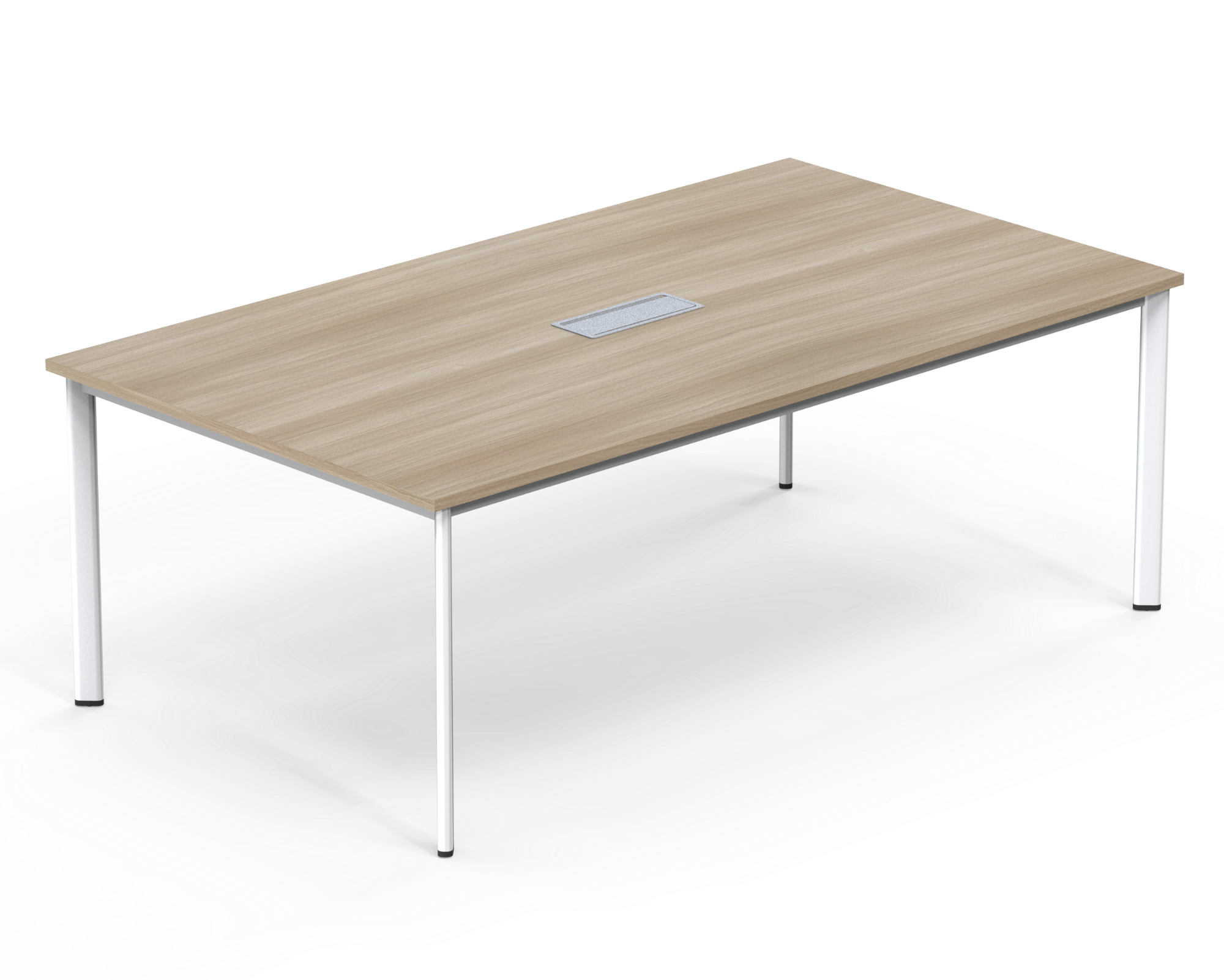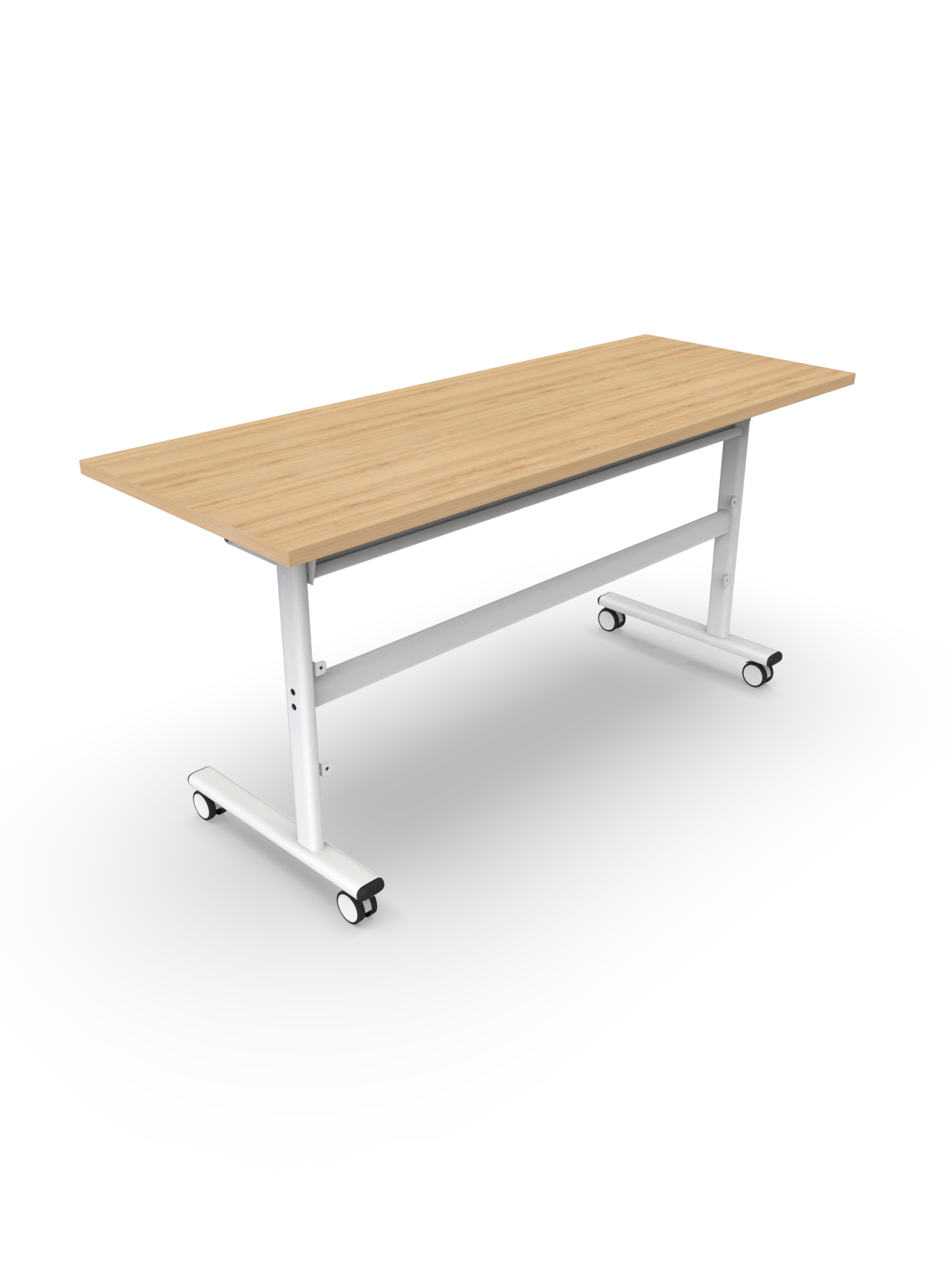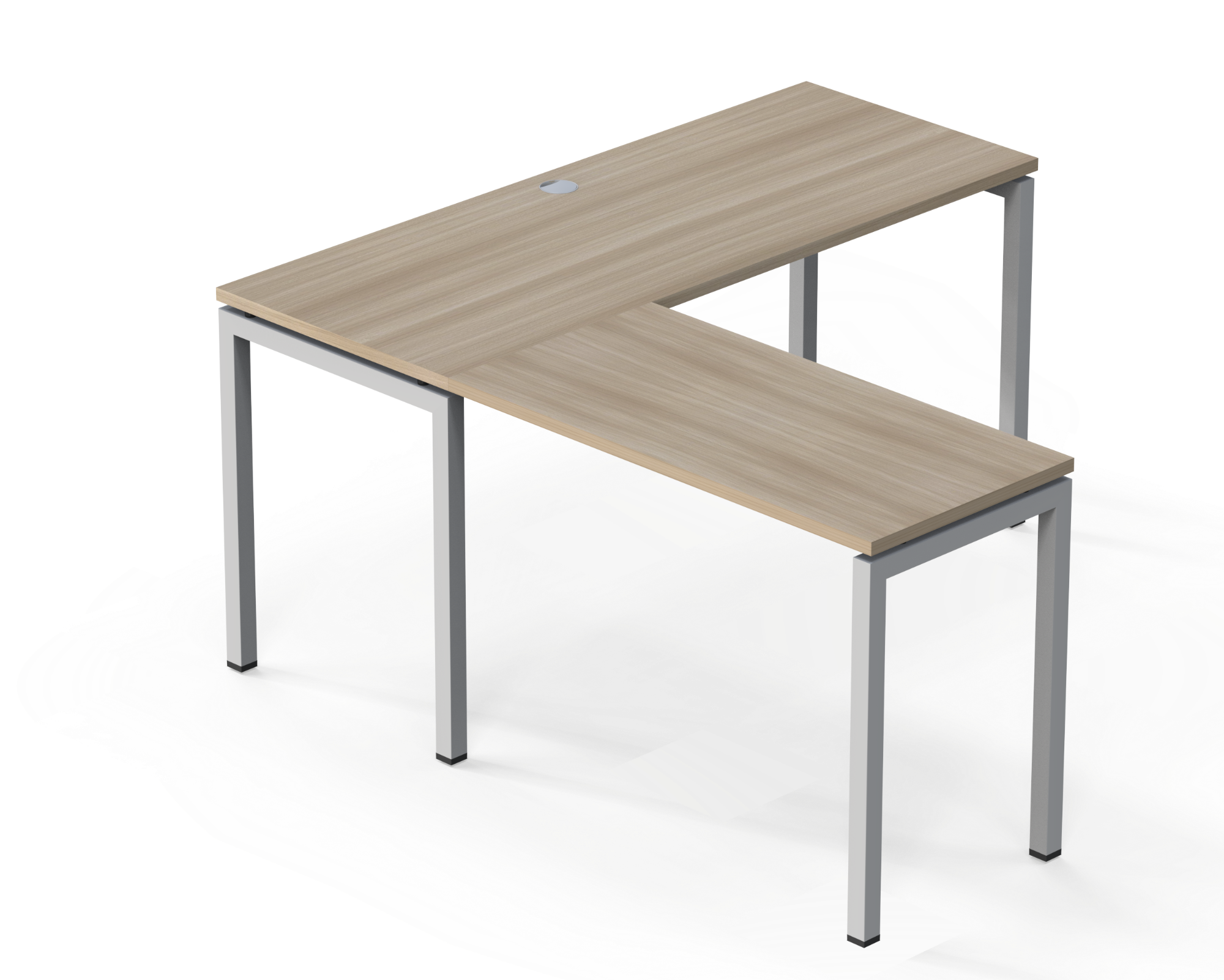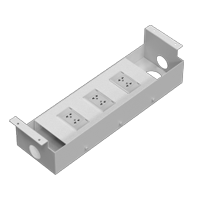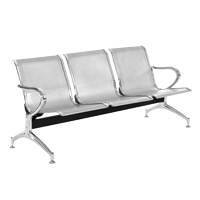
Rectangle, Oval, or Round Meeting Tables – Which Should You Choose? A Detailed Analysis of Functionality & Feng Shui from TheMia
- 1. Rectangle Meeting Tables – The Traditional & Effective Choice for Large Enterprises
- 2. Oval Meeting Tables – Flexible & Modern for Creative Businesses
- 3. Round Meeting Tables – Maximizing Team Connection in Small Groups
- 4. Common Mistakes When Choosing a Meeting Table & How to Avoid Them
- 5. TheMia’s Recommendations – Matching the Table to Your Space & Needs
- 6. Conclusion – Choosing the Right Meeting Table is Choosing the Right Energy for Your Business
In today’s corporate world, a meeting table is more than just a piece of office furniture – it is the strategic hub of a company, where leaders, managers, and employees come together to connect, share ideas, and make critical decisions. The shape of a meeting table doesn’t just influence how people interact – it also affects the flow of energy (Feng Shui), which can directly impact teamwork morale and overall productivity.
In reality, many businesses focus solely on aesthetics while overlooking the importance of functionality and Feng Shui, leading to beautiful but impractical meeting tables that waste resources and reduce efficiency.
In this article, TheMia will analyze in detail the three most common meeting table shapes – rectangle, oval, and round – to help you choose the optimal option that is functional, aesthetically pleasing, and harmonious in Feng Shui.
1. Rectangle Meeting Tables – The Traditional & Effective Choice for Large Enterprises
If you walk into the boardroom of a large corporation or a long-established company, chances are you’ll see a long, elegant rectangular meeting table. This shape has long been associated with seriousness, discipline, and a highly organized work environment.
Choosing a rectangular table is not only an aesthetic decision but also a way to maximize functional use and establish clear seating hierarchy during meetings.
Functional Advantages
-
✅ Optimizes long and narrow meeting rooms: The straight design helps maximize space efficiency.
-
✅ Organized seating arrangement: Chairs can be placed opposite each other, making presentations, discussions, and note-taking more convenient.
-
✅ Perfect for video conferencing: The table’s head provides ample space for screens, microphones, and conference speakers.
Feng Shui Perspective
-
✔ Represents Wood and Earth elements: Symbolizing stability, growth, and long-term development.
-
✔ Clear leadership position: The head of the table is often reserved for executives or team leaders, reinforcing authority and structure.
-
???? Tip: Consider rounded edges or adding greenery to soften sharp corners and reduce conflicting energy.
When to Choose a Rectangular Table
-
✔ Meeting rooms for 15+ participants.
-
✔ Traditional companies that value formality and efficiency.

2. Oval Meeting Tables – Flexible & Modern for Creative Businesses
In recent years, oval meeting tables have become a popular choice for young companies, creative agencies, and startups. The smooth curves of an oval table create a friendlier, more inviting atmosphere and visually expand the space.
Oval tables break away from the strict hierarchy of seating, fostering a more open, collaborative, and egalitarian environment, where everyone feels comfortable sharing ideas.
Functional Advantages
-
✅ Easier movement around the table: Rounded edges improve accessibility and flow.
-
✅ Encourages creativity: Without a “head of the table,” all participants are on equal footing.
-
✅ Safe and stylish: Reduces the risk of collisions and enhances the room’s elegance.
Feng Shui Perspective
-
✔ Represents the Water element: Associated with adaptability, communication, and smooth collaboration.
-
✔ Promotes energy flow: Reduces tension and encourages teamwork.
When to Choose an Oval Table
-
✔ Medium-sized meeting rooms (15–20 participants).
-
✔ Businesses that value openness and collaboration.
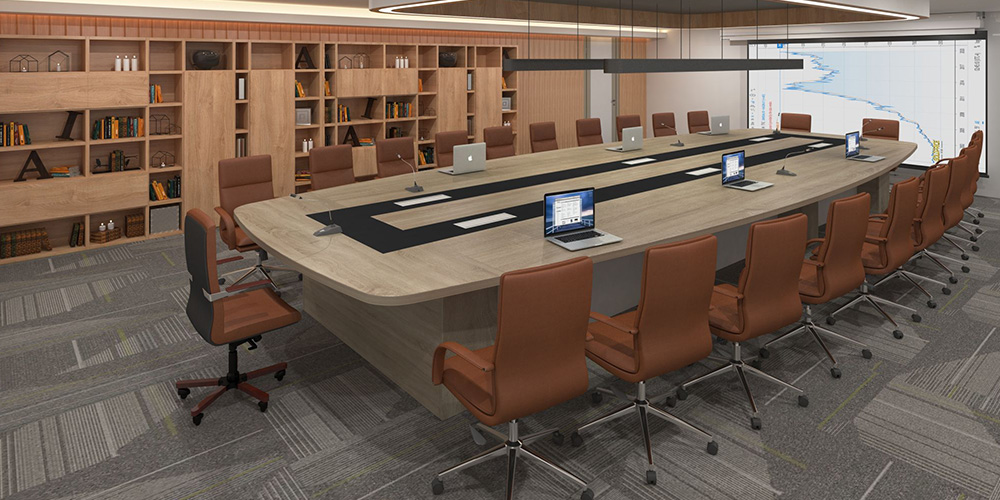
3. Round Meeting Tables – Maximizing Team Connection in Small Groups
Round tables have long been associated with unity and equality. In small group settings, they allow everyone to easily make eye contact, enhancing interaction and understanding.
This is the ideal choice for brainstorming sessions, quick meetings, or small team gatherings of fewer than 8 people.
Functional Advantages
-
✅ Equal distance for all participants: No “power position” – everyone is seated at the same distance from the center.
-
✅ Friendly atmosphere: Encourages open discussions and active participation.
Feng Shui Perspective
-
✔ Symbolizes Heaven: Brings harmony, consensus, and positive energy.
-
✔ Minimizes conflict: Energy flows evenly, reducing direct confrontation.
When to Choose a Round Table
-
✔ Small teams (<8 participants).
-
✔ Meeting rooms under 10m², startups, or youthful offices.
???? Example: A product development team in Da Nang uses a 1.5m round meeting table from TheMia for their sprint meetings, ensuring every member has an equal voice and fostering strong collaboration.
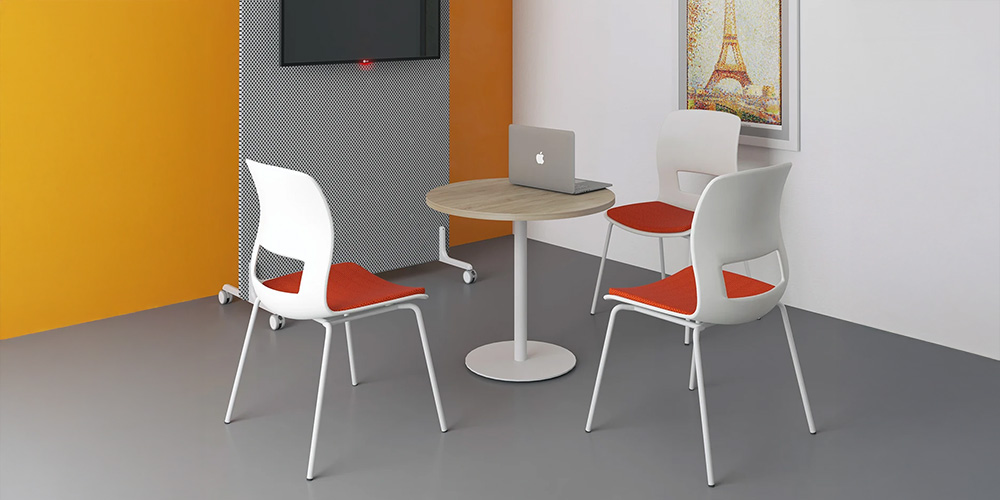
4. Common Mistakes When Choosing a Meeting Table & How to Avoid Them
Many businesses make these mistakes when selecting their meeting table:
❌ Focusing only on aesthetics and ignoring functionality.
❌ Overlooking Feng Shui, leading to a less harmonious atmosphere.
❌ Choosing a table that is too large or too small for the room.
How to fix this:
-
✅ Measure the space and consider the number of regular participants.
-
✅ Choose a shape that fits your company culture and work style.
-
✅ Seek professional advice from interior experts like TheMia.
5. TheMia’s Recommendations – Matching the Table to Your Space & Needs
-
Large meeting rooms → Rectangular tables: Optimize leadership positioning and conference equipment setup.
-
Medium meeting rooms → Oval tables: Create a modern and inclusive environment.
-
Small meeting rooms → Round tables: Encourage interaction and strengthen team bonds.
6. Conclusion – Choosing the Right Meeting Table is Choosing the Right Energy for Your Business
The perfect meeting table is a harmonious blend of functionality, aesthetics, and Feng Shui. Whether you choose a rectangle, oval, or round design, what matters most is that it meets your operational needs, reflects your corporate culture, and brings positive energy to all participants.
???? Contact TheMia today for expert advice on selecting the perfect meeting table for your business – beautiful, durable, Feng Shui-friendly, and highly functional.
Other news
If you walk into the boardroom of a large corporation or a long-established company, chances are you’ll see a long, elegant rectangular meeting table. This shape has long been associated with seriousness, discipline, and a highly organized work environment.
Choosing a rectangular table is not only an aesthetic decision but also a way to maximize functional use and establish clear seating hierarchy during meetings.
Functional Advantages
-
✅ Optimizes long and narrow meeting rooms: The straight design helps maximize space efficiency.
-
✅ Organized seating arrangement: Chairs can be placed opposite each other, making presentations, discussions, and note-taking more convenient.
-
✅ Perfect for video conferencing: The table’s head provides ample space for screens, microphones, and conference speakers.
Feng Shui Perspective
-
✔ Represents Wood and Earth elements: Symbolizing stability, growth, and long-term development.
-
✔ Clear leadership position: The head of the table is often reserved for executives or team leaders, reinforcing authority and structure.
-
???? Tip: Consider rounded edges or adding greenery to soften sharp corners and reduce conflicting energy.
When to Choose a Rectangular Table
-
✔ Meeting rooms for 15+ participants.
-
✔ Traditional companies that value formality and efficiency.

2. Oval Meeting Tables – Flexible & Modern for Creative Businesses
In recent years, oval meeting tables have become a popular choice for young companies, creative agencies, and startups. The smooth curves of an oval table create a friendlier, more inviting atmosphere and visually expand the space.
Oval tables break away from the strict hierarchy of seating, fostering a more open, collaborative, and egalitarian environment, where everyone feels comfortable sharing ideas.
Functional Advantages
-
✅ Easier movement around the table: Rounded edges improve accessibility and flow.
-
✅ Encourages creativity: Without a “head of the table,” all participants are on equal footing.
-
✅ Safe and stylish: Reduces the risk of collisions and enhances the room’s elegance.
Feng Shui Perspective
-
✔ Represents the Water element: Associated with adaptability, communication, and smooth collaboration.
-
✔ Promotes energy flow: Reduces tension and encourages teamwork.
When to Choose an Oval Table
-
✔ Medium-sized meeting rooms (15–20 participants).
-
✔ Businesses that value openness and collaboration.

3. Round Meeting Tables – Maximizing Team Connection in Small Groups
Round tables have long been associated with unity and equality. In small group settings, they allow everyone to easily make eye contact, enhancing interaction and understanding.
This is the ideal choice for brainstorming sessions, quick meetings, or small team gatherings of fewer than 8 people.
Functional Advantages
-
✅ Equal distance for all participants: No “power position” – everyone is seated at the same distance from the center.
-
✅ Friendly atmosphere: Encourages open discussions and active participation.
Feng Shui Perspective
-
✔ Symbolizes Heaven: Brings harmony, consensus, and positive energy.
-
✔ Minimizes conflict: Energy flows evenly, reducing direct confrontation.
When to Choose a Round Table
-
✔ Small teams (<8 participants).
-
✔ Meeting rooms under 10m², startups, or youthful offices.
???? Example: A product development team in Da Nang uses a 1.5m round meeting table from TheMia for their sprint meetings, ensuring every member has an equal voice and fostering strong collaboration.

4. Common Mistakes When Choosing a Meeting Table & How to Avoid Them
Many businesses make these mistakes when selecting their meeting table:
❌ Focusing only on aesthetics and ignoring functionality.
❌ Overlooking Feng Shui, leading to a less harmonious atmosphere.
❌ Choosing a table that is too large or too small for the room.
How to fix this:
-
✅ Measure the space and consider the number of regular participants.
-
✅ Choose a shape that fits your company culture and work style.
-
✅ Seek professional advice from interior experts like TheMia.
5. TheMia’s Recommendations – Matching the Table to Your Space & Needs
-
Large meeting rooms → Rectangular tables: Optimize leadership positioning and conference equipment setup.
-
Medium meeting rooms → Oval tables: Create a modern and inclusive environment.
-
Small meeting rooms → Round tables: Encourage interaction and strengthen team bonds.
6. Conclusion – Choosing the Right Meeting Table is Choosing the Right Energy for Your Business
The perfect meeting table is a harmonious blend of functionality, aesthetics, and Feng Shui. Whether you choose a rectangle, oval, or round design, what matters most is that it meets your operational needs, reflects your corporate culture, and brings positive energy to all participants.
???? Contact TheMia today for expert advice on selecting the perfect meeting table for your business – beautiful, durable, Feng Shui-friendly, and highly functional.
Other news
-
✅ Optimizes long and narrow meeting rooms: The straight design helps maximize space efficiency.
-
✅ Organized seating arrangement: Chairs can be placed opposite each other, making presentations, discussions, and note-taking more convenient.
-
✅ Perfect for video conferencing: The table’s head provides ample space for screens, microphones, and conference speakers.
Feng Shui Perspective
-
✔ Represents Wood and Earth elements: Symbolizing stability, growth, and long-term development.
-
✔ Clear leadership position: The head of the table is often reserved for executives or team leaders, reinforcing authority and structure.
-
???? Tip: Consider rounded edges or adding greenery to soften sharp corners and reduce conflicting energy.
When to Choose a Rectangular Table
-
✔ Meeting rooms for 15+ participants.
-
✔ Traditional companies that value formality and efficiency.

2. Oval Meeting Tables – Flexible & Modern for Creative Businesses
In recent years, oval meeting tables have become a popular choice for young companies, creative agencies, and startups. The smooth curves of an oval table create a friendlier, more inviting atmosphere and visually expand the space.
Oval tables break away from the strict hierarchy of seating, fostering a more open, collaborative, and egalitarian environment, where everyone feels comfortable sharing ideas.
Functional Advantages
-
✅ Easier movement around the table: Rounded edges improve accessibility and flow.
-
✅ Encourages creativity: Without a “head of the table,” all participants are on equal footing.
-
✅ Safe and stylish: Reduces the risk of collisions and enhances the room’s elegance.
Feng Shui Perspective
-
✔ Represents the Water element: Associated with adaptability, communication, and smooth collaboration.
-
✔ Promotes energy flow: Reduces tension and encourages teamwork.
When to Choose an Oval Table
-
✔ Medium-sized meeting rooms (15–20 participants).
-
✔ Businesses that value openness and collaboration.

3. Round Meeting Tables – Maximizing Team Connection in Small Groups
Round tables have long been associated with unity and equality. In small group settings, they allow everyone to easily make eye contact, enhancing interaction and understanding.
This is the ideal choice for brainstorming sessions, quick meetings, or small team gatherings of fewer than 8 people.
Functional Advantages
-
✅ Equal distance for all participants: No “power position” – everyone is seated at the same distance from the center.
-
✅ Friendly atmosphere: Encourages open discussions and active participation.
Feng Shui Perspective
-
✔ Symbolizes Heaven: Brings harmony, consensus, and positive energy.
-
✔ Minimizes conflict: Energy flows evenly, reducing direct confrontation.
When to Choose a Round Table
-
✔ Small teams (<8 participants).
-
✔ Meeting rooms under 10m², startups, or youthful offices.
???? Example: A product development team in Da Nang uses a 1.5m round meeting table from TheMia for their sprint meetings, ensuring every member has an equal voice and fostering strong collaboration.

4. Common Mistakes When Choosing a Meeting Table & How to Avoid Them
Many businesses make these mistakes when selecting their meeting table:
❌ Focusing only on aesthetics and ignoring functionality.
❌ Overlooking Feng Shui, leading to a less harmonious atmosphere.
❌ Choosing a table that is too large or too small for the room.
How to fix this:
-
✅ Measure the space and consider the number of regular participants.
-
✅ Choose a shape that fits your company culture and work style.
-
✅ Seek professional advice from interior experts like TheMia.
5. TheMia’s Recommendations – Matching the Table to Your Space & Needs
-
Large meeting rooms → Rectangular tables: Optimize leadership positioning and conference equipment setup.
-
Medium meeting rooms → Oval tables: Create a modern and inclusive environment.
-
Small meeting rooms → Round tables: Encourage interaction and strengthen team bonds.
6. Conclusion – Choosing the Right Meeting Table is Choosing the Right Energy for Your Business
The perfect meeting table is a harmonious blend of functionality, aesthetics, and Feng Shui. Whether you choose a rectangle, oval, or round design, what matters most is that it meets your operational needs, reflects your corporate culture, and brings positive energy to all participants.
???? Contact TheMia today for expert advice on selecting the perfect meeting table for your business – beautiful, durable, Feng Shui-friendly, and highly functional.
Other news
-
✔ Represents Wood and Earth elements: Symbolizing stability, growth, and long-term development.
-
✔ Clear leadership position: The head of the table is often reserved for executives or team leaders, reinforcing authority and structure.
-
???? Tip: Consider rounded edges or adding greenery to soften sharp corners and reduce conflicting energy.
When to Choose a Rectangular Table
-
✔ Meeting rooms for 15+ participants.
-
✔ Traditional companies that value formality and efficiency.

2. Oval Meeting Tables – Flexible & Modern for Creative Businesses
In recent years, oval meeting tables have become a popular choice for young companies, creative agencies, and startups. The smooth curves of an oval table create a friendlier, more inviting atmosphere and visually expand the space.
Oval tables break away from the strict hierarchy of seating, fostering a more open, collaborative, and egalitarian environment, where everyone feels comfortable sharing ideas.
Functional Advantages
-
✅ Easier movement around the table: Rounded edges improve accessibility and flow.
-
✅ Encourages creativity: Without a “head of the table,” all participants are on equal footing.
-
✅ Safe and stylish: Reduces the risk of collisions and enhances the room’s elegance.
Feng Shui Perspective
-
✔ Represents the Water element: Associated with adaptability, communication, and smooth collaboration.
-
✔ Promotes energy flow: Reduces tension and encourages teamwork.
When to Choose an Oval Table
-
✔ Medium-sized meeting rooms (15–20 participants).
-
✔ Businesses that value openness and collaboration.

3. Round Meeting Tables – Maximizing Team Connection in Small Groups
Round tables have long been associated with unity and equality. In small group settings, they allow everyone to easily make eye contact, enhancing interaction and understanding.
This is the ideal choice for brainstorming sessions, quick meetings, or small team gatherings of fewer than 8 people.
Functional Advantages
-
✅ Equal distance for all participants: No “power position” – everyone is seated at the same distance from the center.
-
✅ Friendly atmosphere: Encourages open discussions and active participation.
Feng Shui Perspective
-
✔ Symbolizes Heaven: Brings harmony, consensus, and positive energy.
-
✔ Minimizes conflict: Energy flows evenly, reducing direct confrontation.
When to Choose a Round Table
-
✔ Small teams (<8 participants).
-
✔ Meeting rooms under 10m², startups, or youthful offices.
???? Example: A product development team in Da Nang uses a 1.5m round meeting table from TheMia for their sprint meetings, ensuring every member has an equal voice and fostering strong collaboration.

4. Common Mistakes When Choosing a Meeting Table & How to Avoid Them
Many businesses make these mistakes when selecting their meeting table:
❌ Focusing only on aesthetics and ignoring functionality.
❌ Overlooking Feng Shui, leading to a less harmonious atmosphere.
❌ Choosing a table that is too large or too small for the room.
How to fix this:
-
✅ Measure the space and consider the number of regular participants.
-
✅ Choose a shape that fits your company culture and work style.
-
✅ Seek professional advice from interior experts like TheMia.
5. TheMia’s Recommendations – Matching the Table to Your Space & Needs
-
Large meeting rooms → Rectangular tables: Optimize leadership positioning and conference equipment setup.
-
Medium meeting rooms → Oval tables: Create a modern and inclusive environment.
-
Small meeting rooms → Round tables: Encourage interaction and strengthen team bonds.
6. Conclusion – Choosing the Right Meeting Table is Choosing the Right Energy for Your Business
The perfect meeting table is a harmonious blend of functionality, aesthetics, and Feng Shui. Whether you choose a rectangle, oval, or round design, what matters most is that it meets your operational needs, reflects your corporate culture, and brings positive energy to all participants.
???? Contact TheMia today for expert advice on selecting the perfect meeting table for your business – beautiful, durable, Feng Shui-friendly, and highly functional.
Other news
-
✔ Meeting rooms for 15+ participants.
-
✔ Traditional companies that value formality and efficiency.

2. Oval Meeting Tables – Flexible & Modern for Creative Businesses
In recent years, oval meeting tables have become a popular choice for young companies, creative agencies, and startups. The smooth curves of an oval table create a friendlier, more inviting atmosphere and visually expand the space.
Oval tables break away from the strict hierarchy of seating, fostering a more open, collaborative, and egalitarian environment, where everyone feels comfortable sharing ideas.
Functional Advantages
-
✅ Easier movement around the table: Rounded edges improve accessibility and flow.
-
✅ Encourages creativity: Without a “head of the table,” all participants are on equal footing.
-
✅ Safe and stylish: Reduces the risk of collisions and enhances the room’s elegance.
Feng Shui Perspective
-
✔ Represents the Water element: Associated with adaptability, communication, and smooth collaboration.
-
✔ Promotes energy flow: Reduces tension and encourages teamwork.
When to Choose an Oval Table
-
✔ Medium-sized meeting rooms (15–20 participants).
-
✔ Businesses that value openness and collaboration.

3. Round Meeting Tables – Maximizing Team Connection in Small Groups
Round tables have long been associated with unity and equality. In small group settings, they allow everyone to easily make eye contact, enhancing interaction and understanding.
This is the ideal choice for brainstorming sessions, quick meetings, or small team gatherings of fewer than 8 people.
Functional Advantages
-
✅ Equal distance for all participants: No “power position” – everyone is seated at the same distance from the center.
-
✅ Friendly atmosphere: Encourages open discussions and active participation.
Feng Shui Perspective
-
✔ Symbolizes Heaven: Brings harmony, consensus, and positive energy.
-
✔ Minimizes conflict: Energy flows evenly, reducing direct confrontation.
When to Choose a Round Table
-
✔ Small teams (<8 participants).
-
✔ Meeting rooms under 10m², startups, or youthful offices.
???? Example: A product development team in Da Nang uses a 1.5m round meeting table from TheMia for their sprint meetings, ensuring every member has an equal voice and fostering strong collaboration.

4. Common Mistakes When Choosing a Meeting Table & How to Avoid Them
Many businesses make these mistakes when selecting their meeting table:
❌ Focusing only on aesthetics and ignoring functionality.
❌ Overlooking Feng Shui, leading to a less harmonious atmosphere.
❌ Choosing a table that is too large or too small for the room.
How to fix this:
-
✅ Measure the space and consider the number of regular participants.
-
✅ Choose a shape that fits your company culture and work style.
-
✅ Seek professional advice from interior experts like TheMia.
5. TheMia’s Recommendations – Matching the Table to Your Space & Needs
-
Large meeting rooms → Rectangular tables: Optimize leadership positioning and conference equipment setup.
-
Medium meeting rooms → Oval tables: Create a modern and inclusive environment.
-
Small meeting rooms → Round tables: Encourage interaction and strengthen team bonds.
6. Conclusion – Choosing the Right Meeting Table is Choosing the Right Energy for Your Business
The perfect meeting table is a harmonious blend of functionality, aesthetics, and Feng Shui. Whether you choose a rectangle, oval, or round design, what matters most is that it meets your operational needs, reflects your corporate culture, and brings positive energy to all participants.
???? Contact TheMia today for expert advice on selecting the perfect meeting table for your business – beautiful, durable, Feng Shui-friendly, and highly functional.
Other news
In recent years, oval meeting tables have become a popular choice for young companies, creative agencies, and startups. The smooth curves of an oval table create a friendlier, more inviting atmosphere and visually expand the space.
Oval tables break away from the strict hierarchy of seating, fostering a more open, collaborative, and egalitarian environment, where everyone feels comfortable sharing ideas.
Functional Advantages
-
✅ Easier movement around the table: Rounded edges improve accessibility and flow.
-
✅ Encourages creativity: Without a “head of the table,” all participants are on equal footing.
-
✅ Safe and stylish: Reduces the risk of collisions and enhances the room’s elegance.
Feng Shui Perspective
-
✔ Represents the Water element: Associated with adaptability, communication, and smooth collaboration.
-
✔ Promotes energy flow: Reduces tension and encourages teamwork.
When to Choose an Oval Table
-
✔ Medium-sized meeting rooms (15–20 participants).
-
✔ Businesses that value openness and collaboration.

3. Round Meeting Tables – Maximizing Team Connection in Small Groups
Round tables have long been associated with unity and equality. In small group settings, they allow everyone to easily make eye contact, enhancing interaction and understanding.
This is the ideal choice for brainstorming sessions, quick meetings, or small team gatherings of fewer than 8 people.
Functional Advantages
-
✅ Equal distance for all participants: No “power position” – everyone is seated at the same distance from the center.
-
✅ Friendly atmosphere: Encourages open discussions and active participation.
Feng Shui Perspective
-
✔ Symbolizes Heaven: Brings harmony, consensus, and positive energy.
-
✔ Minimizes conflict: Energy flows evenly, reducing direct confrontation.
When to Choose a Round Table
-
✔ Small teams (<8 participants).
-
✔ Meeting rooms under 10m², startups, or youthful offices.
???? Example: A product development team in Da Nang uses a 1.5m round meeting table from TheMia for their sprint meetings, ensuring every member has an equal voice and fostering strong collaboration.

4. Common Mistakes When Choosing a Meeting Table & How to Avoid Them
Many businesses make these mistakes when selecting their meeting table:
❌ Focusing only on aesthetics and ignoring functionality.
❌ Overlooking Feng Shui, leading to a less harmonious atmosphere.
❌ Choosing a table that is too large or too small for the room.
How to fix this:
-
✅ Measure the space and consider the number of regular participants.
-
✅ Choose a shape that fits your company culture and work style.
-
✅ Seek professional advice from interior experts like TheMia.
5. TheMia’s Recommendations – Matching the Table to Your Space & Needs
-
Large meeting rooms → Rectangular tables: Optimize leadership positioning and conference equipment setup.
-
Medium meeting rooms → Oval tables: Create a modern and inclusive environment.
-
Small meeting rooms → Round tables: Encourage interaction and strengthen team bonds.
6. Conclusion – Choosing the Right Meeting Table is Choosing the Right Energy for Your Business
The perfect meeting table is a harmonious blend of functionality, aesthetics, and Feng Shui. Whether you choose a rectangle, oval, or round design, what matters most is that it meets your operational needs, reflects your corporate culture, and brings positive energy to all participants.
???? Contact TheMia today for expert advice on selecting the perfect meeting table for your business – beautiful, durable, Feng Shui-friendly, and highly functional.
Other news
-
✅ Easier movement around the table: Rounded edges improve accessibility and flow.
-
✅ Encourages creativity: Without a “head of the table,” all participants are on equal footing.
-
✅ Safe and stylish: Reduces the risk of collisions and enhances the room’s elegance.
Feng Shui Perspective
-
✔ Represents the Water element: Associated with adaptability, communication, and smooth collaboration.
-
✔ Promotes energy flow: Reduces tension and encourages teamwork.
When to Choose an Oval Table
-
✔ Medium-sized meeting rooms (15–20 participants).
-
✔ Businesses that value openness and collaboration.

3. Round Meeting Tables – Maximizing Team Connection in Small Groups
Round tables have long been associated with unity and equality. In small group settings, they allow everyone to easily make eye contact, enhancing interaction and understanding.
This is the ideal choice for brainstorming sessions, quick meetings, or small team gatherings of fewer than 8 people.
Functional Advantages
-
✅ Equal distance for all participants: No “power position” – everyone is seated at the same distance from the center.
-
✅ Friendly atmosphere: Encourages open discussions and active participation.
Feng Shui Perspective
-
✔ Symbolizes Heaven: Brings harmony, consensus, and positive energy.
-
✔ Minimizes conflict: Energy flows evenly, reducing direct confrontation.
When to Choose a Round Table
-
✔ Small teams (<8 participants).
-
✔ Meeting rooms under 10m², startups, or youthful offices.
???? Example: A product development team in Da Nang uses a 1.5m round meeting table from TheMia for their sprint meetings, ensuring every member has an equal voice and fostering strong collaboration.

4. Common Mistakes When Choosing a Meeting Table & How to Avoid Them
Many businesses make these mistakes when selecting their meeting table:
❌ Focusing only on aesthetics and ignoring functionality.
❌ Overlooking Feng Shui, leading to a less harmonious atmosphere.
❌ Choosing a table that is too large or too small for the room.
How to fix this:
-
✅ Measure the space and consider the number of regular participants.
-
✅ Choose a shape that fits your company culture and work style.
-
✅ Seek professional advice from interior experts like TheMia.
5. TheMia’s Recommendations – Matching the Table to Your Space & Needs
-
Large meeting rooms → Rectangular tables: Optimize leadership positioning and conference equipment setup.
-
Medium meeting rooms → Oval tables: Create a modern and inclusive environment.
-
Small meeting rooms → Round tables: Encourage interaction and strengthen team bonds.
6. Conclusion – Choosing the Right Meeting Table is Choosing the Right Energy for Your Business
The perfect meeting table is a harmonious blend of functionality, aesthetics, and Feng Shui. Whether you choose a rectangle, oval, or round design, what matters most is that it meets your operational needs, reflects your corporate culture, and brings positive energy to all participants.
???? Contact TheMia today for expert advice on selecting the perfect meeting table for your business – beautiful, durable, Feng Shui-friendly, and highly functional.
Other news
-
✔ Represents the Water element: Associated with adaptability, communication, and smooth collaboration.
-
✔ Promotes energy flow: Reduces tension and encourages teamwork.
When to Choose an Oval Table
-
✔ Medium-sized meeting rooms (15–20 participants).
-
✔ Businesses that value openness and collaboration.

3. Round Meeting Tables – Maximizing Team Connection in Small Groups
Round tables have long been associated with unity and equality. In small group settings, they allow everyone to easily make eye contact, enhancing interaction and understanding.
This is the ideal choice for brainstorming sessions, quick meetings, or small team gatherings of fewer than 8 people.
Functional Advantages
-
✅ Equal distance for all participants: No “power position” – everyone is seated at the same distance from the center.
-
✅ Friendly atmosphere: Encourages open discussions and active participation.
Feng Shui Perspective
-
✔ Symbolizes Heaven: Brings harmony, consensus, and positive energy.
-
✔ Minimizes conflict: Energy flows evenly, reducing direct confrontation.
When to Choose a Round Table
-
✔ Small teams (<8 participants).
-
✔ Meeting rooms under 10m², startups, or youthful offices.
???? Example: A product development team in Da Nang uses a 1.5m round meeting table from TheMia for their sprint meetings, ensuring every member has an equal voice and fostering strong collaboration.

4. Common Mistakes When Choosing a Meeting Table & How to Avoid Them
Many businesses make these mistakes when selecting their meeting table:
❌ Focusing only on aesthetics and ignoring functionality.
❌ Overlooking Feng Shui, leading to a less harmonious atmosphere.
❌ Choosing a table that is too large or too small for the room.
How to fix this:
-
✅ Measure the space and consider the number of regular participants.
-
✅ Choose a shape that fits your company culture and work style.
-
✅ Seek professional advice from interior experts like TheMia.
5. TheMia’s Recommendations – Matching the Table to Your Space & Needs
-
Large meeting rooms → Rectangular tables: Optimize leadership positioning and conference equipment setup.
-
Medium meeting rooms → Oval tables: Create a modern and inclusive environment.
-
Small meeting rooms → Round tables: Encourage interaction and strengthen team bonds.
6. Conclusion – Choosing the Right Meeting Table is Choosing the Right Energy for Your Business
The perfect meeting table is a harmonious blend of functionality, aesthetics, and Feng Shui. Whether you choose a rectangle, oval, or round design, what matters most is that it meets your operational needs, reflects your corporate culture, and brings positive energy to all participants.
???? Contact TheMia today for expert advice on selecting the perfect meeting table for your business – beautiful, durable, Feng Shui-friendly, and highly functional.
Other news
-
✔ Medium-sized meeting rooms (15–20 participants).
-
✔ Businesses that value openness and collaboration.

3. Round Meeting Tables – Maximizing Team Connection in Small Groups
Round tables have long been associated with unity and equality. In small group settings, they allow everyone to easily make eye contact, enhancing interaction and understanding.
This is the ideal choice for brainstorming sessions, quick meetings, or small team gatherings of fewer than 8 people.
Functional Advantages
-
✅ Equal distance for all participants: No “power position” – everyone is seated at the same distance from the center.
-
✅ Friendly atmosphere: Encourages open discussions and active participation.
Feng Shui Perspective
-
✔ Symbolizes Heaven: Brings harmony, consensus, and positive energy.
-
✔ Minimizes conflict: Energy flows evenly, reducing direct confrontation.
When to Choose a Round Table
-
✔ Small teams (<8 participants).
-
✔ Meeting rooms under 10m², startups, or youthful offices.
???? Example: A product development team in Da Nang uses a 1.5m round meeting table from TheMia for their sprint meetings, ensuring every member has an equal voice and fostering strong collaboration.

4. Common Mistakes When Choosing a Meeting Table & How to Avoid Them
Many businesses make these mistakes when selecting their meeting table:
❌ Focusing only on aesthetics and ignoring functionality.
❌ Overlooking Feng Shui, leading to a less harmonious atmosphere.
❌ Choosing a table that is too large or too small for the room.
How to fix this:
-
✅ Measure the space and consider the number of regular participants.
-
✅ Choose a shape that fits your company culture and work style.
-
✅ Seek professional advice from interior experts like TheMia.
5. TheMia’s Recommendations – Matching the Table to Your Space & Needs
-
Large meeting rooms → Rectangular tables: Optimize leadership positioning and conference equipment setup.
-
Medium meeting rooms → Oval tables: Create a modern and inclusive environment.
-
Small meeting rooms → Round tables: Encourage interaction and strengthen team bonds.
6. Conclusion – Choosing the Right Meeting Table is Choosing the Right Energy for Your Business
The perfect meeting table is a harmonious blend of functionality, aesthetics, and Feng Shui. Whether you choose a rectangle, oval, or round design, what matters most is that it meets your operational needs, reflects your corporate culture, and brings positive energy to all participants.
???? Contact TheMia today for expert advice on selecting the perfect meeting table for your business – beautiful, durable, Feng Shui-friendly, and highly functional.
Other news
Round tables have long been associated with unity and equality. In small group settings, they allow everyone to easily make eye contact, enhancing interaction and understanding.
This is the ideal choice for brainstorming sessions, quick meetings, or small team gatherings of fewer than 8 people.
Functional Advantages
-
✅ Equal distance for all participants: No “power position” – everyone is seated at the same distance from the center.
-
✅ Friendly atmosphere: Encourages open discussions and active participation.
Feng Shui Perspective
-
✔ Symbolizes Heaven: Brings harmony, consensus, and positive energy.
-
✔ Minimizes conflict: Energy flows evenly, reducing direct confrontation.
When to Choose a Round Table
-
✔ Small teams (<8 participants).
-
✔ Meeting rooms under 10m², startups, or youthful offices.
???? Example: A product development team in Da Nang uses a 1.5m round meeting table from TheMia for their sprint meetings, ensuring every member has an equal voice and fostering strong collaboration.

4. Common Mistakes When Choosing a Meeting Table & How to Avoid Them
Many businesses make these mistakes when selecting their meeting table:
❌ Focusing only on aesthetics and ignoring functionality.
❌ Overlooking Feng Shui, leading to a less harmonious atmosphere.
❌ Choosing a table that is too large or too small for the room.
How to fix this:
-
✅ Measure the space and consider the number of regular participants.
-
✅ Choose a shape that fits your company culture and work style.
-
✅ Seek professional advice from interior experts like TheMia.
5. TheMia’s Recommendations – Matching the Table to Your Space & Needs
-
Large meeting rooms → Rectangular tables: Optimize leadership positioning and conference equipment setup.
-
Medium meeting rooms → Oval tables: Create a modern and inclusive environment.
-
Small meeting rooms → Round tables: Encourage interaction and strengthen team bonds.
6. Conclusion – Choosing the Right Meeting Table is Choosing the Right Energy for Your Business
The perfect meeting table is a harmonious blend of functionality, aesthetics, and Feng Shui. Whether you choose a rectangle, oval, or round design, what matters most is that it meets your operational needs, reflects your corporate culture, and brings positive energy to all participants.
???? Contact TheMia today for expert advice on selecting the perfect meeting table for your business – beautiful, durable, Feng Shui-friendly, and highly functional.
-
✅ Equal distance for all participants: No “power position” – everyone is seated at the same distance from the center.
-
✅ Friendly atmosphere: Encourages open discussions and active participation.
Feng Shui Perspective
-
✔ Symbolizes Heaven: Brings harmony, consensus, and positive energy.
-
✔ Minimizes conflict: Energy flows evenly, reducing direct confrontation.
When to Choose a Round Table
-
✔ Small teams (<8 participants).
-
✔ Meeting rooms under 10m², startups, or youthful offices.
???? Example: A product development team in Da Nang uses a 1.5m round meeting table from TheMia for their sprint meetings, ensuring every member has an equal voice and fostering strong collaboration.

4. Common Mistakes When Choosing a Meeting Table & How to Avoid Them
Many businesses make these mistakes when selecting their meeting table:
❌ Focusing only on aesthetics and ignoring functionality.
❌ Overlooking Feng Shui, leading to a less harmonious atmosphere.
❌ Choosing a table that is too large or too small for the room.
How to fix this:
-
✅ Measure the space and consider the number of regular participants.
-
✅ Choose a shape that fits your company culture and work style.
-
✅ Seek professional advice from interior experts like TheMia.
5. TheMia’s Recommendations – Matching the Table to Your Space & Needs
-
Large meeting rooms → Rectangular tables: Optimize leadership positioning and conference equipment setup.
-
Medium meeting rooms → Oval tables: Create a modern and inclusive environment.
-
Small meeting rooms → Round tables: Encourage interaction and strengthen team bonds.
6. Conclusion – Choosing the Right Meeting Table is Choosing the Right Energy for Your Business
The perfect meeting table is a harmonious blend of functionality, aesthetics, and Feng Shui. Whether you choose a rectangle, oval, or round design, what matters most is that it meets your operational needs, reflects your corporate culture, and brings positive energy to all participants.
???? Contact TheMia today for expert advice on selecting the perfect meeting table for your business – beautiful, durable, Feng Shui-friendly, and highly functional.
-
✔ Symbolizes Heaven: Brings harmony, consensus, and positive energy.
-
✔ Minimizes conflict: Energy flows evenly, reducing direct confrontation.
When to Choose a Round Table
-
✔ Small teams (<8 participants).
-
✔ Meeting rooms under 10m², startups, or youthful offices.
???? Example: A product development team in Da Nang uses a 1.5m round meeting table from TheMia for their sprint meetings, ensuring every member has an equal voice and fostering strong collaboration.

4. Common Mistakes When Choosing a Meeting Table & How to Avoid Them
Many businesses make these mistakes when selecting their meeting table:
❌ Focusing only on aesthetics and ignoring functionality.
❌ Overlooking Feng Shui, leading to a less harmonious atmosphere.
❌ Choosing a table that is too large or too small for the room.
How to fix this:
-
✅ Measure the space and consider the number of regular participants.
-
✅ Choose a shape that fits your company culture and work style.
-
✅ Seek professional advice from interior experts like TheMia.
5. TheMia’s Recommendations – Matching the Table to Your Space & Needs
-
Large meeting rooms → Rectangular tables: Optimize leadership positioning and conference equipment setup.
-
Medium meeting rooms → Oval tables: Create a modern and inclusive environment.
-
Small meeting rooms → Round tables: Encourage interaction and strengthen team bonds.
6. Conclusion – Choosing the Right Meeting Table is Choosing the Right Energy for Your Business
The perfect meeting table is a harmonious blend of functionality, aesthetics, and Feng Shui. Whether you choose a rectangle, oval, or round design, what matters most is that it meets your operational needs, reflects your corporate culture, and brings positive energy to all participants.
???? Contact TheMia today for expert advice on selecting the perfect meeting table for your business – beautiful, durable, Feng Shui-friendly, and highly functional.
-
✔ Small teams (<8 participants).
-
✔ Meeting rooms under 10m², startups, or youthful offices.
???? Example: A product development team in Da Nang uses a 1.5m round meeting table from TheMia for their sprint meetings, ensuring every member has an equal voice and fostering strong collaboration.

4. Common Mistakes When Choosing a Meeting Table & How to Avoid Them
Many businesses make these mistakes when selecting their meeting table:
❌ Focusing only on aesthetics and ignoring functionality.
❌ Overlooking Feng Shui, leading to a less harmonious atmosphere.
❌ Choosing a table that is too large or too small for the room.
How to fix this:
-
✅ Measure the space and consider the number of regular participants.
-
✅ Choose a shape that fits your company culture and work style.
-
✅ Seek professional advice from interior experts like TheMia.
5. TheMia’s Recommendations – Matching the Table to Your Space & Needs
-
Large meeting rooms → Rectangular tables: Optimize leadership positioning and conference equipment setup.
-
Medium meeting rooms → Oval tables: Create a modern and inclusive environment.
-
Small meeting rooms → Round tables: Encourage interaction and strengthen team bonds.
6. Conclusion – Choosing the Right Meeting Table is Choosing the Right Energy for Your Business
The perfect meeting table is a harmonious blend of functionality, aesthetics, and Feng Shui. Whether you choose a rectangle, oval, or round design, what matters most is that it meets your operational needs, reflects your corporate culture, and brings positive energy to all participants.
???? Contact TheMia today for expert advice on selecting the perfect meeting table for your business – beautiful, durable, Feng Shui-friendly, and highly functional.
Many businesses make these mistakes when selecting their meeting table:
❌ Focusing only on aesthetics and ignoring functionality.
❌ Overlooking Feng Shui, leading to a less harmonious atmosphere.
❌ Choosing a table that is too large or too small for the room.
How to fix this:
-
✅ Measure the space and consider the number of regular participants.
-
✅ Choose a shape that fits your company culture and work style.
-
✅ Seek professional advice from interior experts like TheMia.
5. TheMia’s Recommendations – Matching the Table to Your Space & Needs
-
Large meeting rooms → Rectangular tables: Optimize leadership positioning and conference equipment setup.
-
Medium meeting rooms → Oval tables: Create a modern and inclusive environment.
-
Small meeting rooms → Round tables: Encourage interaction and strengthen team bonds.
6. Conclusion – Choosing the Right Meeting Table is Choosing the Right Energy for Your Business
The perfect meeting table is a harmonious blend of functionality, aesthetics, and Feng Shui. Whether you choose a rectangle, oval, or round design, what matters most is that it meets your operational needs, reflects your corporate culture, and brings positive energy to all participants.
???? Contact TheMia today for expert advice on selecting the perfect meeting table for your business – beautiful, durable, Feng Shui-friendly, and highly functional.
-
Large meeting rooms → Rectangular tables: Optimize leadership positioning and conference equipment setup.
-
Medium meeting rooms → Oval tables: Create a modern and inclusive environment.
-
Small meeting rooms → Round tables: Encourage interaction and strengthen team bonds.
6. Conclusion – Choosing the Right Meeting Table is Choosing the Right Energy for Your Business
The perfect meeting table is a harmonious blend of functionality, aesthetics, and Feng Shui. Whether you choose a rectangle, oval, or round design, what matters most is that it meets your operational needs, reflects your corporate culture, and brings positive energy to all participants.
???? Contact TheMia today for expert advice on selecting the perfect meeting table for your business – beautiful, durable, Feng Shui-friendly, and highly functional.
The perfect meeting table is a harmonious blend of functionality, aesthetics, and Feng Shui. Whether you choose a rectangle, oval, or round design, what matters most is that it meets your operational needs, reflects your corporate culture, and brings positive energy to all participants.
???? Contact TheMia today for expert advice on selecting the perfect meeting table for your business – beautiful, durable, Feng Shui-friendly, and highly functional.
